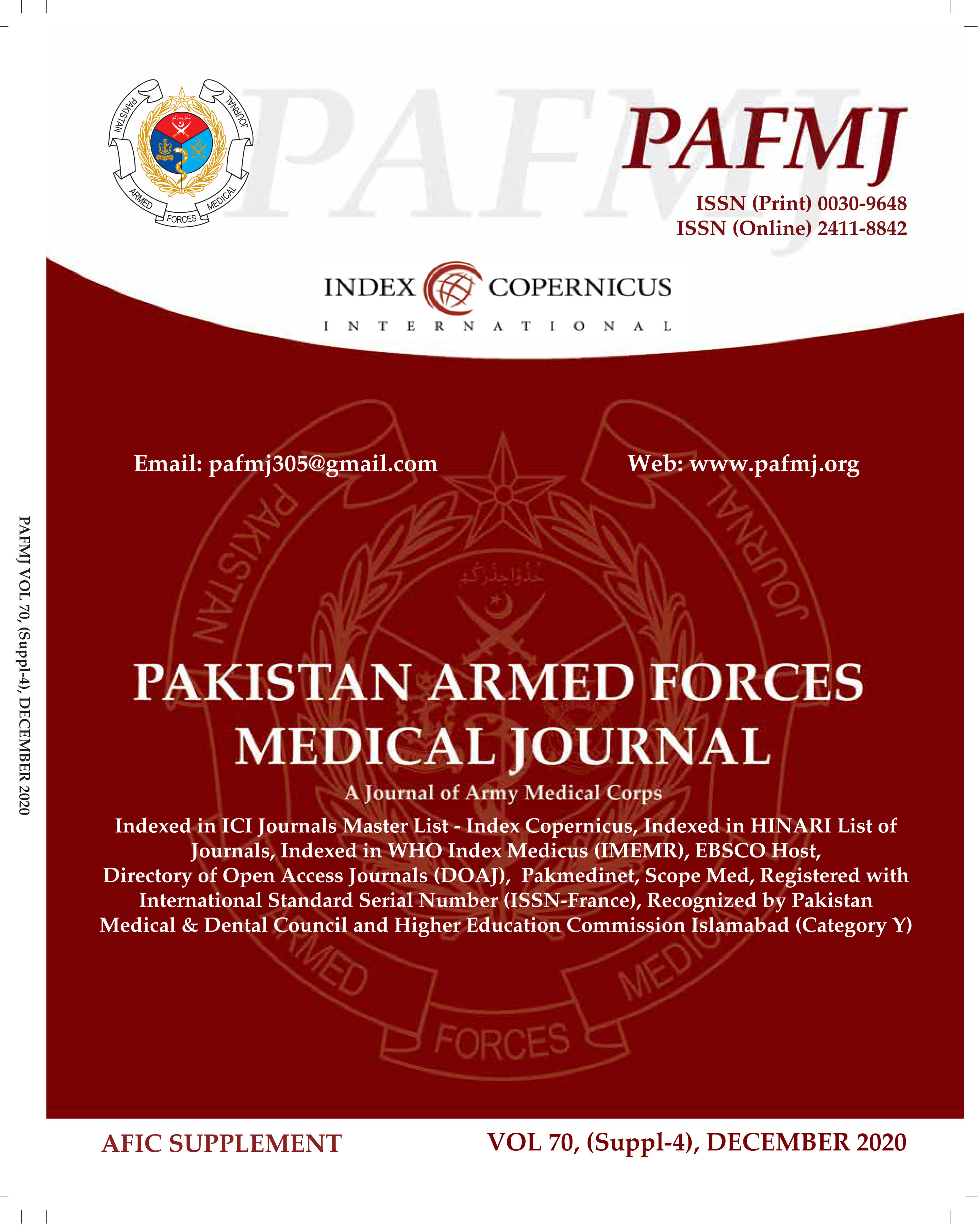TRICUSPID VALVE REGURGITATION IN PATIENTS UNDERGOING ENDOCARDIAL LEADS PLACEMENT
DOI:
https://doi.org/10.51253/pafmj.v70iSuppl-4.6007Keywords:
Permanent pacemaker, Tricuspid regurgitation, Implantable cardioverter defibrillatorsAbstract
Objective: To assess prospectively the presence and degree of tricuspid regurgitation (TR) after right ventricular (RV) lead placement utilizing 2-dimensional and doppler echocardiography in a group of patients implanted with Permanent pace-maker or implantable cardioverter defibrillator (ICD).
Study Design: Descriptive cross sectional study.
Place and Duration of Study: Study was conducted at OPD of AFIC/NIHD Rawalpindi from Jan to Jun 2019.
Methodology: One hundred patients after cardiac stimulation system implantation were included in this study. Patients with severe valve disease, heart failure, congenital heart disease, pre-existing pulmonary hypertension and presence of moderate or severe tricuspid regurgitation were excluded. M-mode, 2 –dimensional and doppler echocardiographic studies were performed. Continuous-wave doppler measurements were made from apical four-chamber view in order to obtain maximum tricuspid flow velocities. A complete echocardiographic study was performed following device implantation. Echocardiographic measurements were repeated at 6-months of follow-up period. Those patients who developed tricuspid regurgitation were further assessed by color doppler, taking into account density and contour of the jet on continuous-wave doppler. Tricuspid regurgitation severity was classified into three groups: mild, moderate and severe according to the recommendations for non-invasive evaluation of native valvular regurgitation by the American Society of Echocardiography. The collected data was analysed by using SPSS-23.
Results: Out of 100 patients, 67 (67%) were males and 33(33%) were females with the mean age of 65.29 ± 12.02 years. All the patients had normal chambers dimensions before the procedure. 65 (65%) had leads screwed to RV apex while 35 (35%) had through RV septum. 83 (83%) patients received a dual chamber device, while 17 (17%) patients got single chamber (ventricular) device implanted. Following device implantation after 6 months mild TR was noted in 4 (4%), moderate TR in 4 (4%) and severe TR 2 (2%) in cases.
Conclusion: Tricuspid incompetence following endocardial leads implantation is not rare and occurred in approximately 10% of our patients. This complication may be preventable, because it is likely due to the interference of the endocardial lead with the TV.















